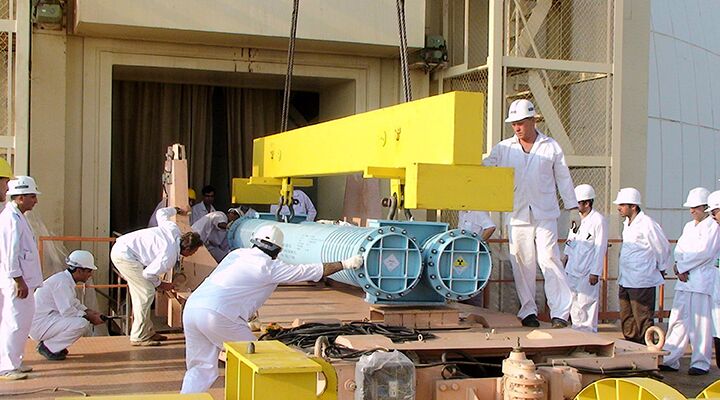
Caspian Horses and Nuclear Reactors
As Iran returns to the negotiating table with the P5+1 nations, the dangers of relieving sanctions on Iran need to be stated clearly. We need to consider what Iran hopes to achieve through talks, because ultimately those goals end with nuclear war.
To fully comprehend the implications of a deal with Iran, an analogy may help pierce through the haze of arguments for and against employing sanctions relief in exchange for Iranian promises. Consider the Caspian horse.
This particular breed of horse is said to have originated in the mountainous regions of northern Iran. Often described as short and stocky, due in part to the hard terrain it endures, this beast is endowed with zeal and determination that once made it an excellent courier in the Persian Empire.
This horse is renowned for its speed and agility. The short, wiry legs grant it incredible jumping ability. In the sixth century b.c., King Darius i used this breed to hunt lions, as depicted on the king’s Trilingual Seal.
In his book titled A History of the World in 100 Objects, Neil MacGregor called the Caspian horse the sports car of the equestrian world—fast and luxurious. Today, the Caspian still remains in use, although in a less glamorous role than lion hunting; it is content to pull heavy carts through bazaars in northern Iran.
To tie this stocky stallion to the geopolitical meetings now going on behind closed doors, Iran’s nuclear program could be seen as the Caspian horse, and the reactors and centrifuges spinning away in the Persian deserts as its wiry legs and steely muscles.
If Iran’s nuclear program, the Caspian horse, wanted to leap forward with speed and vigor, it certainly has the means. It takes 2,500 to 3,000 centrifuges operating for a full year to produce enough enriched uranium for one nuclear bomb. According to the Jerusalem and Diaspora Ministry of Israel, Iran has 19,000 centrifuges, meaning that if they all spun at once, Iran would have enough enriched uranium for a nuclear bomb in just six to seven weeks.
This is where the sanctions come into play. The economic sanctions established by the international community are the cart that keeps the horse anchored, however loosely. After a series of intermediary deals over the past year, the cart has been significantly lightened, but it still prevents Iran’s nuclear program from shooting away at breakneck speed.
Ideally, Iran hopes to reach a long-term deal in which sanctions are relieved but Tehran also maintains its nuclear infrastructure. Past deals certainly indicate Iran will achieve this goal. The intermediary deals have not required Iran to destroy a single reactor or centrifuge, not one nut or bolt. The West has only required an empty promise from Iran not to advance the nuclear program.
In effect, the P5+1 nations will merely trust the horse not to bolt as they tentatively unhook the cart.
But knowing Iran’s past and its constant pursuit of nuclear weapons, you can be sure that the Caspian will take off in a hurry.
The same scenario played out in North Korea. The Koreans made promise after promise to the international community—then raced to build a nuclear arsenal before anyone could stop them. The P5+1 nations should have learned that hollow promises do not equate to meaningful concessions.
But here we are at the negotiating table with Iran again. And again, Iran asks for everything and gives nothing.
Once sanctions are eased or lifted, all that the P5+1 nations will be left with is a cart full of sanctions and a nuclear-armed Iran. Like the Caspian horse, Iran’s nuclear program will leap forward, and there will be nothing the international community can do to catch it in time.
For more on where Iran’s nuclear program is galloping off to, read our free booklet The King of the South. It will explain why this horse should never have been let loose from the stables.
